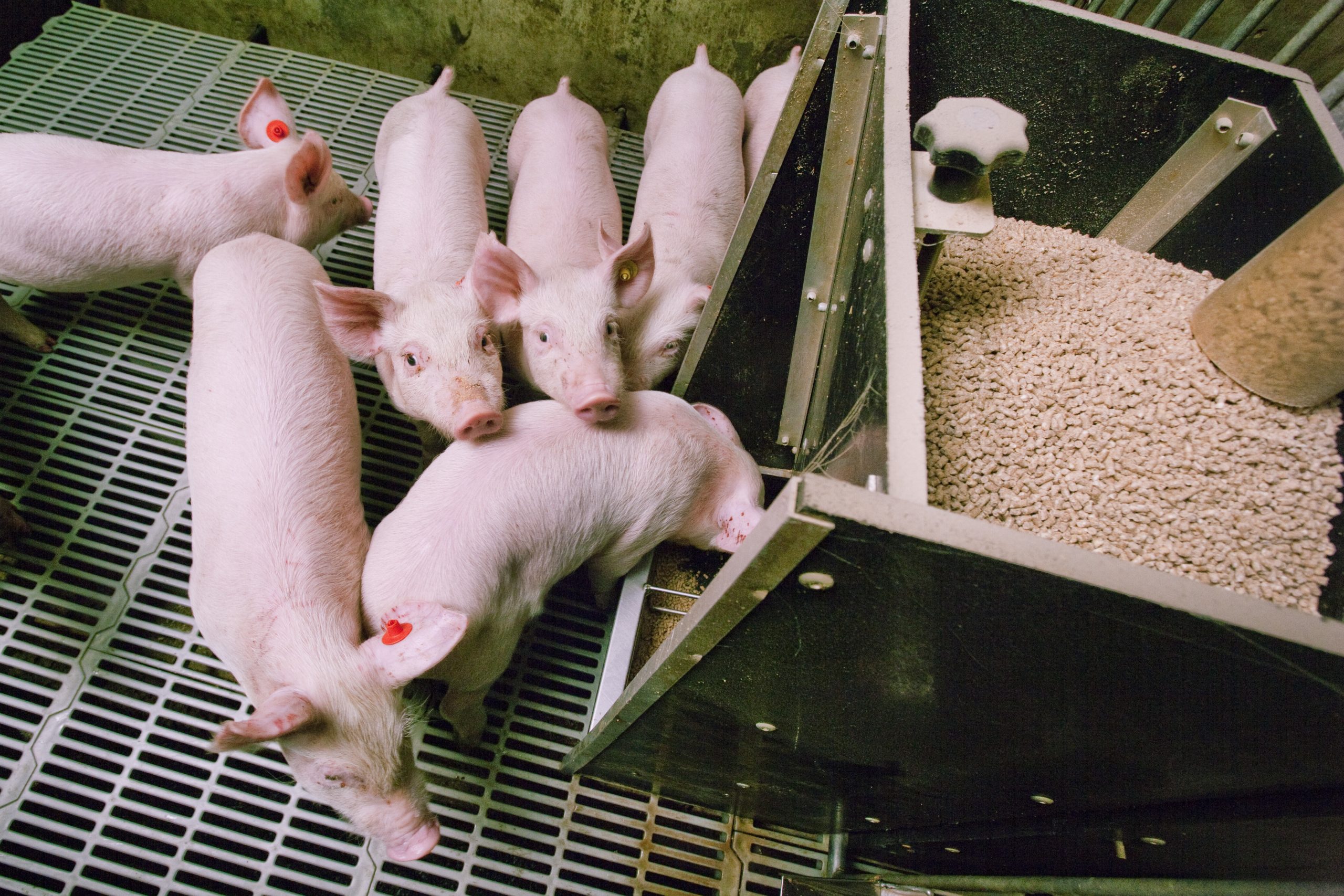Organic acids: Chemically defined

Organic acids have been used for more than 50 years to reduce bacterial and fungal growth in feedstuffs, resulting in the preservation of feed. But they also show promise in reducing antibiotic use. In this article we take a look at which properties are important when dealing with organic acids.
Organic carboxylic acids can be divided in several subgroups according to their molecular structure. Figure 1 shows the most frequently used organic acids in those different groups. Organic acids can be also be divided according to their application field. The first group comprises feed hygiene regulators against moulds, yeasts or enterococcus to limit their growth and associated nutrient losses. In this respect, propionic acid against moulds and sorbic acid against yeasts are known to be effective.
A second group of acids is effective in improving feed efficiency by lowering the pH in the stomach. Especially for young piglets after weaning it is important to keep the pH in the stomach low enough to ensure the protein digestion. Reducing the pH of the stomach will also result in a bacteriostatic effect. Fumaric, formic and lactic acid are commonly used as pH reducing acids. The last group is compiled by acids with a direct antibacterial effect. Killing the pathogenic bacteria already at stomach level will lead to a reduced incidence of diarrhoea and an overall health stimulating effect. Medium chain fatty acids (MCFAs) have been proven to kill off pathogens very effectively (bactericidal effect). This group is particularly important with regard to the reduction of antibiotics.
Solidification temperature
Often, acids are added to the feed via the premix or concentrate. As a consequence, liquid acids have to be put on an expensive carrier. It is preferred to opt for a liquid application having several advantages over the dry form. An example is the direct contact between the acid and the feed which favours the feed hygiene. Moreover, with a good installation, a liquid application is very convenient and moreover flexible in dosing. The latter being an important asset for the feed supplier. In Table 1 the solidification temperature of commercially available organic acids shows that only a few organic acids are liquid at room temperature and can therefore be used in a liquid acid application.
Figure 1 – Commercially used organic acids according to their molecular structure.

pKa value
The pKa value of an acid determines whether an acid is rather pH reducing (bacteriostatic) or rather antibacterial (bactericidal). Every acid has a unique pKa value being the pH at which 50% of the acid appears in its undissociated form and 50% in dissociated form. This balance may shift either way depending on the environmental pH. On average, the pH of the stomach in piglets is four, in extreme circumstances around weaning it can even rise to five. If an acid has a pKa value below four, the balance will shift to the dissociated form. Dissociation equals the release of H+ ions, resulting in acidification. This group of acids is called pH reducing acids. If the pKa of the acid is higher than four, the balance will shift to the undissociated form. This form is a requisite to approach the bacteria, and thus to be bactericidal, since the bacterial cell membrane is negatively charged.
Table 2 lists the pKa value of acids suited for liquid acid applications. In the stomach of the piglet, formic and lactic acid will dissociate and acidify the stomach. Acidifying the stomach will help the protein digestion and will act bacteriostatic, but the direct antibacterial effect will be limited. To approach the negatively charged pathogen effectively, the acid molecule must appear in its undissociated form which is the case for medium chain fatty acids, acetic, propionic and butyric acid. The bigger the difference between the pKa value and the pH in the stomach of the piglet, the more the balance shift towards undissociated acid molecules. It is therefore valuable to use pH reducing acids and antibacterial acids together. pH reducing acids will ensure a better action of the antibacterial acids because they enlarge the pH-pKa difference of the antibacterial acid. MCFA have the biggest pKa value so in all aspects, more molecules are available to approach the bacteria. A supplementation with also formic and lactic acid will result in a synergistic effect due to the latter pH-pKa difference.
HLB balance
Approaching the bacteria is the first condition to be antibacterial. The second condition is an optimal HLB (hydrophile-lipophile balance) value. A bacterial cell membrane consists out of phospholipids. Phospholipids are amphiphilic, meaning that they contain a hydrophilic and a lipophilic part. A phospholipid molecule has a hydrophilic head and a lipophilic tail. An organic acid is also an amphiphilic molecule because it contains a hydrophilic carboxyl group (-COOH) and a hydrophobic hydrocarbon chain. The amphiphilic character can be expressed in a HLB value, expressing the ratio hydrophilic over lipophilic parts. To be an efficient destabiliser of the bacterial cell membrane, the HLB of the acid molecule must be similar to that of the bacterial cell membrane.
Medium chain fatty acids show this optimal hydrophilic lipophilic balance to destabilise the bacterial cell membrane. More precisely, Gram-negative bacteria are more susceptible for caproic (C6) and caprylic (C8) acid and Gram-positive bacteria are more susceptible for capric (C10) and lauric (C12) acid. It is known that the combination of those four medium chain fatty acids work synergistically and make an optimal broad spectrum approach to kill bacteria in the animal. In conclusion, if one wants to supplement an additive to focus on feed hygiene and optimal gut health, a synergistic liquid mixture of pH reducing acids together with antibacterial acids is advised. Depending on the level of infection pressure and type of bacteria to counter the composition of the mixture can be optimised to achieve maximum effectiveness.
For more information on custom made liquid acid blends (Vitacid) from Nuscience, please contact the author (Kevin.Vanneste@nusciencegroup.com).











